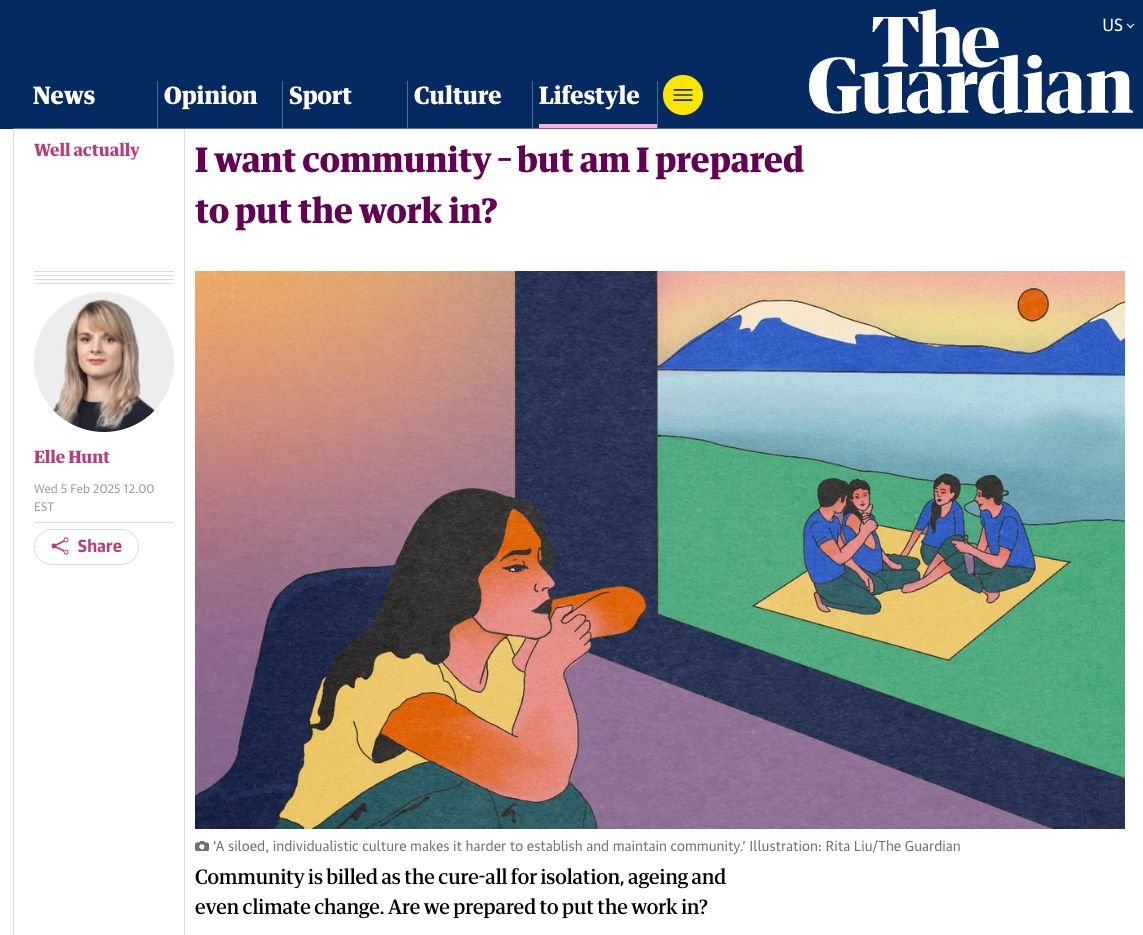The Guardian Interview: Lessons on Community
The Illusion of Community—And What It Really Takes to Build One
The word community evokes a sense of warmth, belonging, and connection. We hear it used to describe workplaces, social groups, and many online spaces. But how often do these so-called communities actually create space for rewarding relationships and mutual care that true community can deliver?
In our culture that often prioritizes individual success over collective well-being, real community doesn’t happen by accident. It takes intention, effort, and often enough, discomfort.
The Problem with "Mis-Sold" Community
In a recent Guardian article, journalist Elle Hunt explored this idea, drawing from a conversation we had earlier this year. She highlighted an important truth: many spaces that claim to be communities are actually something else entirely.
“A group of artists or athletes, for instance, can’t really be considered a community if the prevailing feeling is of competitiveness or resentment… Even events that explicitly set out to foster community can fall short by being too large, loud or impersonal – what Vogl calls ‘an arena experience.’”
This is a common issue. Many organizations, workplaces, and even social groups talk about community, and in reality, they function as networks, crowds, or competitive spaces. If people don’t recognize mutual concern—if they miss trust, shared purpose, or shared growth—then what they have isn’t an enriching community. It’s likely a mirage community.
What Real Community Requires
If we want to build supportive community, we need to recognize that this takes more than just gathering people together in a space and hoping something good comes of it.
In A real community includes:
A Shared Values or Purpose (at least one)
Generosity
Mutual Concern
When these elements are missing, even well-intended efforts are working on something else.
The Path Forward
If we want real connection, we must design for it. That means creating experiences where the space and intentional activity allows participants to feel seen and valued, and where mutual support is a norm—not just a hope in the midst of competition.
Elle’s article in The Guardian is a great resource for thinking about these ideas more deeply.
You can read it here:
Get free resources on building the community you long for at www.charlesvogl.com



